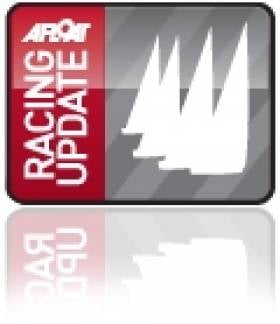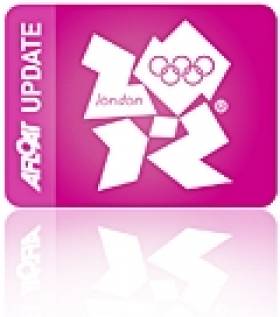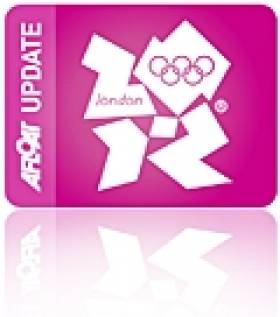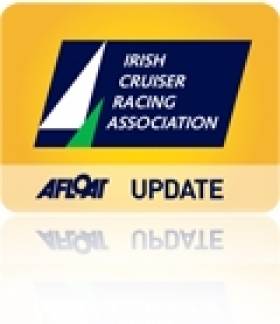Displaying items by tag: Twomey
Racing Round up: Dun Laoghaire Regatta, ISAF Youths, Optimists, Paralympic, RORC, WIORA, Quarter Ton, Kiteboarding.
In offshore news, the Transatlantic Race 2011 Nears a Finish, and RORC yachts that headed West did best in the St Malo from Cowes race. Ireland's entry in the Tall Ships race, Celtic Mist, is safely in Scotland. WIORA starts this week in Clifden, thirty boats are expected.
Two top Cork performers are in Cowes for this week's Quarter Ton Cup.
In other boating news, rower Siobhan McCrohan won bronze at the World Rowing Champs in Lucerne, Kiteboarding debuted in Dun Laoghaire. There were Medals for Irish Kayakers at Athens Special Olympics.
And finally after a Elaine 'Shooter' Alexander is set for hero's welcome this week as she becomes the first woman from Northern Ireland to circumnavigate the island of Ireland.
All on our home page this morning, thanks for your interest in Irish Sailing and Boating.
Paralympic Sailing - Kinsale Trio are London Bound
Coming into racing today at the IFDS World Championships at Weymouth with one race to go, in the Sonar Class John Twomey and his crew Anthony Hegarty and Ian Costello from Kinsale Yacht Club were fairly confident they would take one of the six qualifying spots left for the 2012 Paralympic Regatta at Weymouth. Eight of the 14 places available had already been allocated.
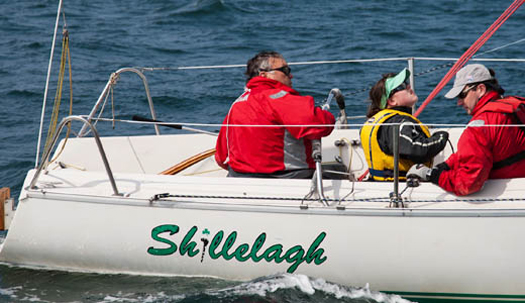
John Twomey has qualified in the Sonar class for next year's Paralympic Games in London. Photo: Bob Bateman
However, one can never be sure of anything until the last race has been sailed. Little did they know that such was to be the case today and with wind strength of 30 knots the last race for all classes was abandoned.
Jubilation then set in as the Irish crew realized they were indeed qualified, taking the second spot behind USA of the six remaining places. They were followed by Australia, Canada, Austria and Japan in that order making up the total of 14 sailors to compete in the Sonar Paralympic fleet in 2012.
Set-back for Twomey in Weymouth
There have been set backs for the Irish Paralympic crew today in the Sonar Class at Weymouth in the IFDS Worlds writes Claire Bateman.
Crews braved winds of more than 20 knots in Portland Harbour today as Weymouth and Portland's finally lived up to its reputation as a breezy venue after three days of light and fluky airs.
Things are really starting to hot up with two days and three races to go.

Gear failure has dropped Shillelagh to 12th. Photo: Bob Bateman
In spite of the fact that they suffered gear breakages in both races today that saw them slip to 12th place from 9th yesterday, when speaking with John Twomey after racing, he and his crew remained confident of qualifying the Irish spot for the 2012 Paralympics. Eight countries have qualified already and with six places remaining to be filled and, making the calculations, he said, except for disaster, they were very hopeful of making the qualification. He said that in to-day's racing they had to contend with winds of 25 knots making for extremely difficult conditions.
With the breezes well over 20 knots the 155 sailors competing at the RYA-run event at Weymouth and Portland National Sailing Academy this week were provided today with a completely different challenge to the first three days of racing and with the strong winds now forecast to remain for the rest of the week, the competitors are facing some close to the knuckle sailing. Competition in the Sonar Class is extremely keen and includes top world level sailors. Defending World champion Thierry Schmitter (NED) continued his march to his third consecutive crown with a first and second today, increasing his lead to 17 points over Britain's Helena Lucas. A good day for Schmitter's Dutch team mate Andre Rademaker saw him move into the medal places, as a race eight disqualification for Britain's Megan Pascoe saw her drop to fourth.
Racing continues tomorrow(Thurs) with Races 9 and 10 and will finish with Race 11 on Friday.
After 6 races and one discard John Twomey and his crew Anthony Hegarty and Ian Costello, all from Kinsale Yacht Club, are lying in 9th place overall in the 23 boat Sonar Class. John and his crew have just finished competing in Shilleagh at the Sovereign's Cup Kinsale, finishing 5th in Class 3 IRC and the ICRA Championships at Royal Cork Yacht Club where they finished 4th overall in Class 3 IRC finishing behind Tiger, Anchor Challenge and Blackfun in that order, an excellent performance indeed.
The IFDS World Championships, organised in 2011 by the RYA, is the most prestigious event in the disabled sailing calendar outside of the Paralympic Games and is being held at the Weymouth and Portland National Sailing Academy (WPNSA) that will play host to the sailing competition for the London 2012 Olympic and Paralympic Games.
The event is taking place from July 1st to 8th, 2011, and forms the second qualifying event for the 2012 Paralympic Games sailing competition, with entries exceeding 100 boats across 3 Paralympic Classes. The KYC team is hoping to make the Irish qualification for the Sonar class having just missed the qualification by one point last time around.
All the competitors in the huge entry are keen to gain experience of the Olympic and Paralympic venue in the run-up to 2012, making this event an important fixture in the international calendar.
Racing continues through to Friday 8 July.

A recent shot of John Twomey and crew in Action in Shillelagh. Photo: Robert Bateman
Windy Start Expected for Friday's ICRA Nationals
In Class 0 Local boats Antix, Anthony O'Leary; Jump Juice, Conor Phelan and Gloves off Kieran Twomey will be challenged By George Sisk's new Wow, Norbert Reilly's Crazy Horse and Richard Fides Welsh entry Impetuous which is a former Blondie.
Class 1 sees a fine Class where last years Echo winner Ian Nagle's Jelly Baby will be challenged by sister ship Peter Reddin's Jetstream Denis Hewitt and friends on Raptor and likes of Donal O Leary's D Tox.
Class 2 will see a battle between Corby 25s; Vinny O' Shea's Yanks and Franks, Brian Goggin's new Allure and Denis Coleman's Thunderbird.These will be tested by likes of Conor Rohan's Ruthless, Shane Statham's Slack Alice Kieran and Liz O Brien's Magnet and Desmond Ivers Deasy combo on Bad Company.
Class 3 has a backbone this year of state of the art Quarter Tonners. ICRA are welcoming Black Fun Jamie Mc Dowell all the way from New Zealand where he will be challenged by Neil Kenefick's Tiger, Eamon Rohan's Anchor Challenge who will be up against Leonard Donnery's No Knomes, John Twomey's Blazer 23 Shilelagh and Sullivan Brothers in Running Wild. Fergus Coughlan's White Knight from Cobh will also challenge.

New Zealand yacht Black Fun, complete with torpodeo keel, has arrived in Crosshaven for Friday's Cruiser National Championships. Photo: Bob Bateman
First time Class 4 will see Kevin O Connor's Gaelic Kiwi take on likes of Alan Carroll's Sundancer and Michael Sexton' Granny Knot.
The Non Spinnaker Corinthian Cup sees a fine fleet where Billy and Hilary Duane's Expression will compete against Clive Doherty's Phaeton Bill O Mahony's Julia B and Seamus Gilroy's Split Point.
John Downing's Samba and Conor O Donovan's Extension will also be in contention.
Day Prize Sponsors Dubarry have come up with the innovative idea that each crew on the winning boats in IRC and Echo each day will receive a prize in reward for their efforts.Two styles of Dubarry sailing hats and custom sailing socks will be included in this effort to recognise crews and offer variety each day.
The Royal Cork have laid on high standard racing on the water under Race Officers Peter Crowley and Richard Leonard and crews will be warmly welcomed ashore to a carnival type atmosphere with music and casual food on the go immediately after racing.


























